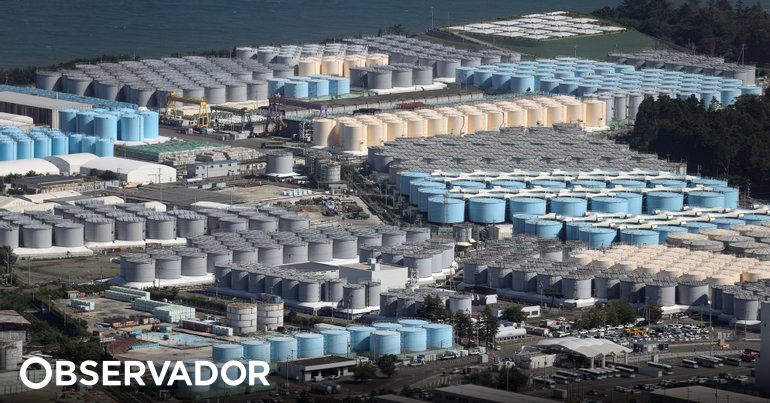
An earthquake measuring 5.8 on the Richter scale shook northeastern Japan this Friday, forcing the temporary suspension of the discharge of contaminated waters from the Fukushima nuclear plant into the Pacific Ocean.
The earthquake occurred at 00:14 (3:14 pm on Thursday in Lisbon), with its epicenter on the coast of Fukushima prefecture and around 50 kilometers deep under the sea, but did not lead to the issuance of any tsunami warning.
Tokyo Electric Power Company (Tepco), which operates the damaged Fukushima Daiichi plant, said the earthquake forced the suspend the current round of dumping of radioactive and treated water into the seawhich began on February 28th.
“We were able to confirm remotely that there were no anomalies” in the facilities to dilute tritium [substância radioativa] in the water and remove it to the ocean, indicated the Tepco on the social network. But “as a precaution, we have suspended operations at these facilities, in accordance with predefined operational protocols,” he added.
At the Fukushima Daiichi NPS, we have confirmed that there are no abnormalities in facilities that have been suspended, such as ALPS treated water dilution/discharge facility. We are resuming their operation sequentially.
— TEPCO (@TEPCO_English) March 15, 2024
Shortly after the earthquake, Japan’s Nuclear Safety Authority indicated on its website that no anomalies had been detected em Fukushima Daiichi.
The earthquake did not have any impact on the Tokai No. 2 nuclear plant in central Ibaraki prefecture or the Onagawa nuclear plant in central Miyagi prefecture, operators said.
Until now No material damage or injuries caused by the shake were recorded.
Japan is located on the so-called Ring of Fire, one of the most active seismic zones in the world, and suffers earthquakes relatively frequently, so infrastructure is designed to resist tremors.
On Wednesday, the director general of the International Atomic Energy Agency (IAEA), Rafael Grossi, said, during a visit to Fukushima, that the discharges are safe. The discharges led to opposition from fishing communities and neighboring countries, including China, which have banned all imports of fish and shellfish.
IAEA chief says discharges from Fukushima nuclear plant into the Pacific are safe
TEPCO is unloading more than 1.32 million tons of radioisotope-contaminated waterafter being processed to remove the majority of this highly radioactive material and diluted in seawater, a process that will last for several decades.
The Japanese government, the plant operator and the Japanese nuclear regulator opted for discharge into the ocean as the best way to solve the problem of temporarily storing the liquid inside nuclear facilities, and after rejecting other alternatives due to technical complexity or higher costs .
Source: https://observador.pt/2024/03/15/sismo-de-58-sacode-japao-e-obriga-a-suspensao-das-descargas-de-fukushima/

